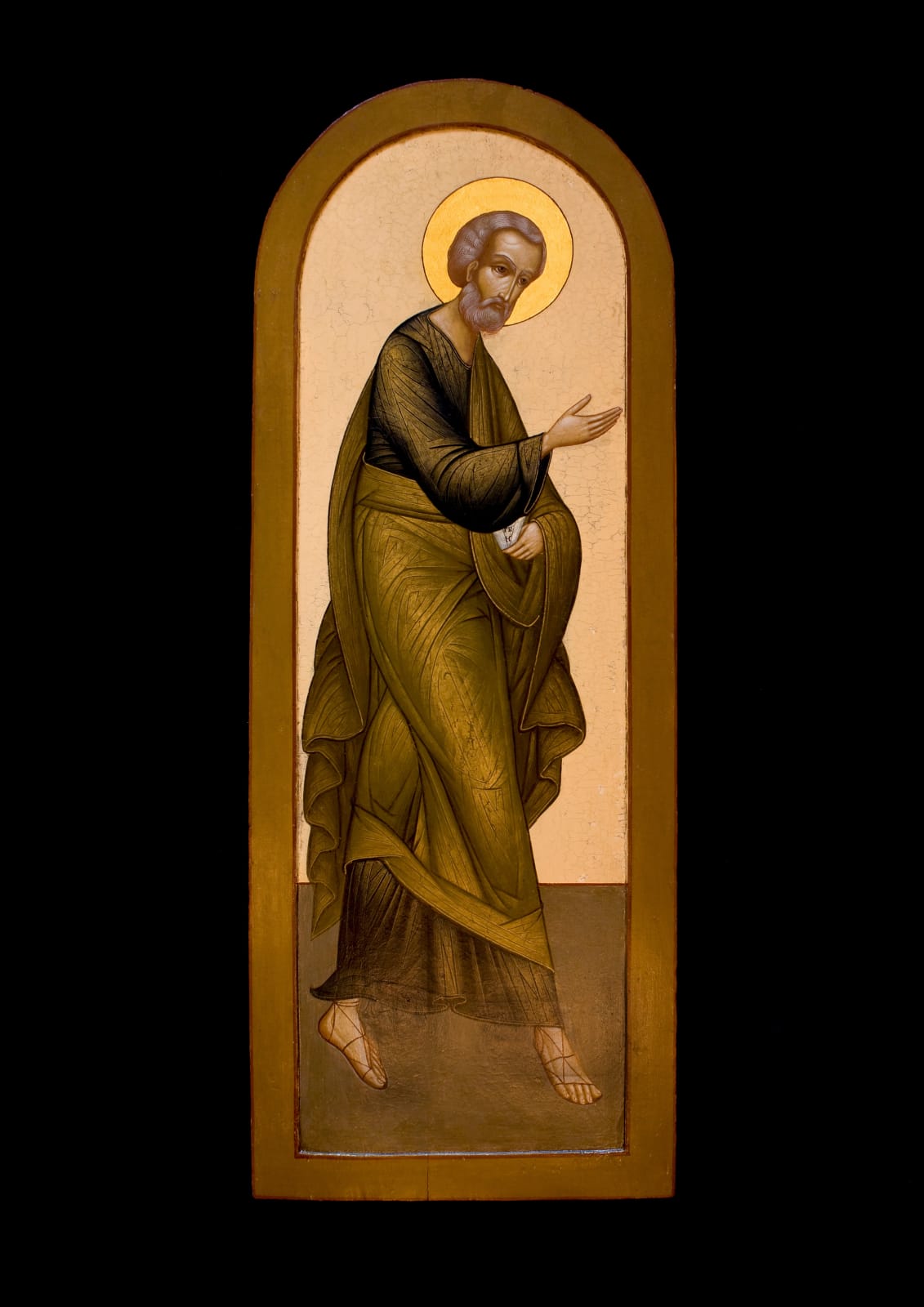Saint Peter
The panel shows Saint Peter from the Deesis tier of an iconostasis. There is no identifying inscription but the saint is recognizable by the yellowish colour of his chiton, typical beard and hairstyle and from his position, traditionally on the right of Christ and opposite Saint Paul. Peter holds a scroll with the letters ‘ТЫ ЕС’, the beginning of the phrase, conventionally associated with the iconography, ‘ТЫ ЕСИ ХРИСТОС, СЫН БОГА ЖИВАГО’. Thou art the Christ the Son of the Living God. Matthew 16.16.
The painting is of extremely high quality and has been conserved by the restorer Martin Bould. He drew attention to the ragged holes at the back of the panel and, comparing them with the neat, smaller holes at the front, suggested they were bullet holes. This turned out to be correct. There are a number of examples of shooting at icons especially during the civil war in Russia and the period known as the Red Terror with its hatred towards religion and destruction of churches and monasteries. We learn from one account that in January 1919 the 15th Inzensk Division entered the Cossack village of Veschenskaya. ‘The soldiers of Lenin, having eaten the bread taken away from Cossacks, used to take their rifles and shoot the icons and lampadas. Suddenly I heard shots behind me – first, second, third. I turned back and saw a man in a soldier’s uniform. He was shooting with his rifle aiming at the icon. Probably he was executing an order – he was shooting in the icon of the saint bishop’. (http://www.veshki-bazar.by.ru/church.htm). Professor Richard Marks writes: “Re. the bullet-riddled icon, I have looked up the reference. It is on p.174 of Ryszard Kapuscinski, Imperium, citing an article by the Russian art historian A. Kuzniecov in the monthly journal Moskva (Jan. 1990). It lists among the destructive uses icons were put to after the Bolshevik Revolution 'In the army - for target practice'”. Professor Yuri Bobrov states: ‘I had found similar on the Charleman painting "John the Baptist" in the Malta Order Chapel at the Vorontcov Palace in St.Petersburg made by soldiers in 1921.’

